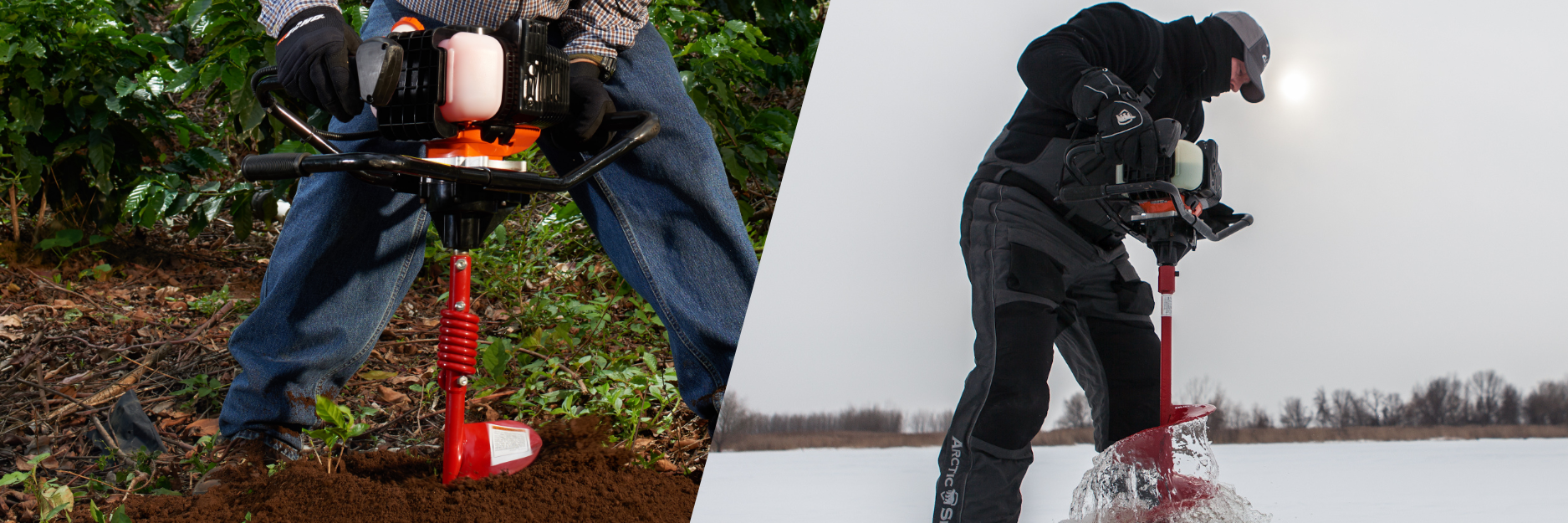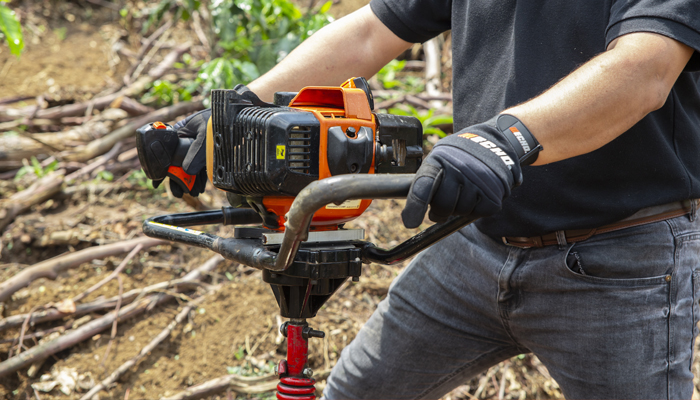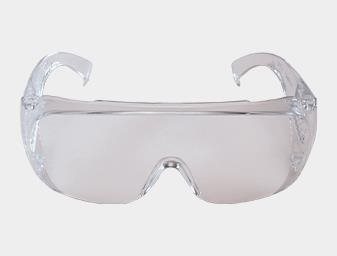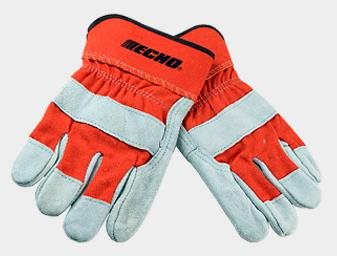How to Use an Auger
An auger is an essential tool you can use to quickly and efficiently dig holes with precision. Whether you’re planting trees, installing fence posts, or tackling any other landscaping project, augers can make the job easier and reduce the time – and effort – it takes to manually dig.
Here, you can learn how to use an auger safely and get the most out of your power tool.
Choosing the Right Equipment
Like any tool, you want to choose the right auger for the job. The ECHO EA-410 Earth/Ice Auger is a powerful, reliable choice. Designed for versatility and durability, the EA-410 takes less effort to drill deep into any surface – whether it’s compacted clay or icy, frozen ground. The heavy-duty engine drill is compatible with multiple bits, so it can be used for different applications – from post holes to large planting areas.
Before you start digging, the following tips will help you get the right auger:

Bit size: Choose a bit that’s designed for your digging needs. Smaller bits are great for posts or plants, but you’d want a larger one if you’re going to dig deep holes for trees.
Soil type: When working in rocky or compacted soil, you’ll need an auger with enough power to break through challenging ground.
Fuel and maintenance: Your auger should be fueled and in good working condition before you begin any type of digging job.
For more details on the ECHO EA-410, visit ECHO's Auger Engine Drill page.
Preparing the Area
Prepping the area you plan to dig in is crucial. It makes your job smoother so you can avoid obstacles that might damage your equipment or slow you down. For safety and efficiency, take time to assess and prepare the area you’ll be working in.
Call before you dig: Before starting any digging project, contact your local utility marking service to have underground utilities checked and marked. Marking these locations helps prevent damage to gas, water, or electrical lines, ensuring a safe work environment.
Clear the ground: Remove any large obstacles in your work area, like roots, rocks, or debris that could interfere with digging.
Check soil conditions: Make sure the soil is ready for digging. If the ground is too hard, soaking can soften it before you start to dig.
Mark hole locations: If you need to be accurate and consistent, use stakes or spray paint to mark where each hole will be.
Operating the Auger
Knowing how to use an auger safely means learning how to properly operate it. Handling power tools properly ensures safety and helps maintain the engine’s performance, preventing avoidable accidents and strain. Always review the manufacturer’s guidelines before using a new tool.
- Check fuel and oil levels: Prevent engine damage by making sure your auger is fueled and lubricated.
- Stabilize the auger: Firmly hold the tool with both hands to maintain control.
- Start the engine: Follow the manufacturer’s instructions and use the pull-start mechanism to power up your auger.
- Position the auger: Align with the marked hole location before you engage the auger.
- Apply steady pressure: Let your tool do most of the work – apply moderate downward pressure while keeping the auger stable.
- Control the speed: Avoid excessive force – it can cause the auger to jerk unexpectedly.

Digging Technique
Use best digging practices to get precise and clean holes. Proper technique makes the job easier and extends the lifespan of your equipment. Rushing or using too much force causes unnecessary wear and tear.
- Apply consistent downward pressure: Too much force will overload the engine, while too little can slow your progress.
- Lift periodically: Raise the auger slightly every few inches to remove excess soil and prevent clogging.
- Monitor depth: To get consistent holes, monitor hole depth and adjust pressure accordingly.
- Work in sections: When you’re using the auger to dig deep holes, work one section at a time, take frequent breaks, and remove displaced soil before continuing.
Post-Digging Best Practices
Regular maintenance is essential for safe and efficient operation. After each job, follow the steps below to ensure your auger is ready to go the next time you are, and that it lasts for years. A little bit of post-use care keeps your equipment in top condition and goes a long way in preventing mechanical issues.
- Let the auger cool completely: Turn off the engine and let it cool completely before storing.
- Inspect the auger bit: Check for wear and tear, damage, or debris in the blade.
- Clean the auger: Remove any soil or buildup to prevent rust and wear.
- Store properly: When you’re not using it, store your auger in a dry, secure place that’s free from moisture and dirt.
Tips for Safety and Efficiency
There are simple ways to ensure seamless operation and extend the life of your tool – the first step is paying close attention to the safety suggestions designed to protect you and reduce the risk of injuries, breakdowns, or costly repairs.
Before using an auger – or any power tool – you should familiarize yourself with the controls. This is especially important if you’re operating something for the first time. A well-maintained auger will be more effective, and routinely inspecting and servicing your tool helps prevent unexpected malfunctions. Taking breaks during prolonged use serves two purposes – it helps reduce fatigue and allows you to maintain control.
- Wear protective gear: Protective gear is a must whenever you use a power tool. Wear gloves, safety goggles, and sturdy footwear to protect yourself.
- Maintain a firm grip: Keep both hands on the handle at all times to maintain control, particularly when you’re digging through tough soil.
- Check for underground utilities: Before digging, call your local utility company to make sure there aren’t any gas, water, or electrical lines in your work area.
- Avoid overuse: Let the auger do the work – forcing a tool like this can cause overheating and excessive wear on the engine.
- Perform regular maintenance: Clean and inspect your auger after every use to keep it in top condition.
Using an auger like the ECHO EA-410 will make your next digging project significantly easier, whether you’re installing fence posts, planting trees, or working on any landscaping task. Choosing the right equipment, preparing the area, using proper digging techniques, and following maintenance guidelines and safety protocols lets you get the most out of your tool, and prolong its life.
For more information and to browse ECHO’s auger selection, visit the Auger Engine Drill page.



